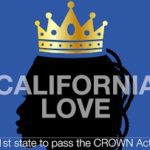California and New York Ban Hair Discrimination
By: Katherine S. Catlos, Anna Maria Tejada, Philip R. Voluck
The inappropriate act of touching another’s hair is a common allegation in race harassment and discrimination cases — from hiring to termination to public accommodations involving security checks (searching dreadlocks). In the educational arena, reports of black children being sent home from school because their natural hair was deemed unruly or a distraction to others alarmed many. In another polarizing incident, a white New Jersey high school wrestling referee was recently thrust into the national spotlight after he forced an African-American wrestler to cut his dreadlocks to avoid forfeiting a high school wrestling match. Local officials expressed outrage toward the referee, who had told the wrestler his hair “wasn’t in its natural state.”
 California is now the first state to act against such conduct. The new California law, aptly named Creating a Respectful and Open Workplace for Natural Hair (CROWN) Act, heightens the sensitivity and, perhaps, educates those who might be unaware of the impact of trespassing one’s body, especially for people of color. CROWN amends both the Government and Education Codes to define “race or ethnicity” as “inclusive of traits historically associated with race, including, but not limited to, “hair texture and protective hairstyles.” The new law expressly protects hairstyles including, but not limited to, “braids, locks, and twists.”
California is now the first state to act against such conduct. The new California law, aptly named Creating a Respectful and Open Workplace for Natural Hair (CROWN) Act, heightens the sensitivity and, perhaps, educates those who might be unaware of the impact of trespassing one’s body, especially for people of color. CROWN amends both the Government and Education Codes to define “race or ethnicity” as “inclusive of traits historically associated with race, including, but not limited to, “hair texture and protective hairstyles.” The new law expressly protects hairstyles including, but not limited to, “braids, locks, and twists.”
On July 12, 2019, following California’s enactment, New York Governor Andrew Cuomo signed Assembly Bill 07797, which “prohibits race discrimination based on natural hair or hairstyles,” effective immediately, and amends both the New York Human Rights Law and Dignity for All Students Act to make clear that race discrimination also includes “traits historically associated with race, including but not limited to hair texture and protective hairstyles.”
A glance at today’s pop culture reveals the deep-seated emotions the unwanted touching of one’s hair can trigger. Solange Beyoncé’s track, “Don’t Touch My Hair” provides a tuneful backdrop to these laws, particularly when she sings, “[t]hey don’t understand what it means to me, where we chose to go, where we’ve been to know.” Solange, perhaps in prescience, intones “Don’t touch my crown.” Rolling Stone has commented that the track, “can be read as an explicit rejection of this behavior (the devaluation and alienation of black spaces), as a simple establishment of boundaries, or as a powerful pledge of personal identity.” Further, Natelegé Whaley, writing for The Huffington Post, observed, “Hair is used as a metaphor for our entire essence on this track and is the perfect symbol, as our hair is one thing that has always been policed throughout history and into the present.”
In short, while these laws are newly enacted, they address conduct long been perceived as deeply offensive, at best, and at worst, direct evidence of discrimination. Indeed, constitutional protections for discrimination based on hairstyle can be traced to San Francisco’s 1873 Pigtail Ordinance, when the courts struck down a law intended to force prisoners to have their hair cut within one inch of the scalp, which affected Quing Chinese prisons in particular, as it would require their queues, a waist-long, braided pigtail, to be cut off.
Expect other states to fall in line as they attempt to eradicate all forms of race discrimination, including those based on one’s physical appearance. On a federal level, EEOC Guidelines have long included “hair texture” and “dreadlocks” as “personal characteristics of race.” Businesses would be wise to review their policies to ensure that any grooming policy is “race-neutral” and applied accordingly.
Huffington Post
Video
Wikipedia










